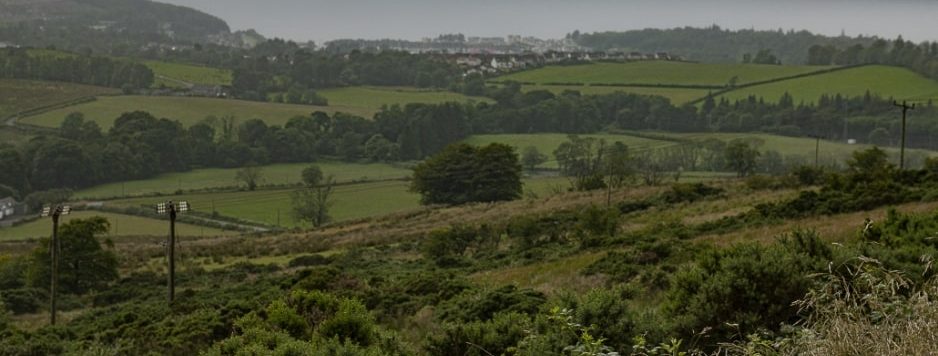-
Project title
Inverkip Urban Village
-
Clients
Scottish Power
Transforming a power station to an urban village – an ecological and arboricultural case study
Our client, Scottish Power is applying for Planning Permission in Principle (PPiP) to redevelop the site of a former oil-fired power station into an urban village featuring 650 houses, business and retail units, a public park, foot and cycle paths, a coastal park, and community space.
Ecus was brought onto the project to provide a range of ecological services including desk-based studies, statutory body consultation, targeted field surveys, and the creation of an Ecology chapter to inform the EIA Report (EIAR). We also provided arboricultural services including statutory body consultation, field surveys, and a Tree Survey Report.
Located between the villages of Wemyss Bay and Inverkip, on the west coast of Scotland and covering 50.4 hectares, this current brownfield site is made up of hardstanding, semi-natural broadleaved woodland, dense scrub and standing water.
Sensitive receptors include the Firth of Clyde, Brueacre Burn, Wemyss Bay Local Nature Conservation Site, Designated Ancient Woodland protected by a Tree Preservation Order, and semi-natural broadleaf woodland.
Key issues were to protect the sensitive ecological and arboricultural receptors, retain the woodland within the site and create a green corridor across the site to enhance connectivity.
Ecology
Protected species that could potentially be adversely affected included common amphibians, badger, bats, birds, otter, reptiles and hedgehog. However, through the implementation of working buffers, pre-construction surveys, landscaping and mitigation, it has been assessed that there would be no significant negative effects on the ecology of the site or the surrounding area.
Mitigation measures should be included in a Construction Environmental Management Plan (CEMP), and incorporate a Silt Control Management Plan (SCMP) to prevent water pollution. A Woodland Management Plan (WMP) would also be implemented during the construction phase, and an ecologist would be appointed to provide advice during construction to ensure that mitigation measures are applied appropriately.
It is also considered that the proposed development would have a beneficial effect on running water habitat, otter and fish species. The removal of a culvert and sump building will have a positive influence in the long term.
Ecological planting and habitat creation (discussed in the Landscape and Environmental Management Plan; LEMP, and the WMP) are proposed to mitigate potential effects and improve the biodiversity of the site in the long term.
Arboriculture
Woodland connectivity is of great importance for biodiversity and landscape aesthetics. Any scheme should look to maintain the strong north-south connectivity of the woodland areas.
To ensure that the woodland would be retained and connectivity created across the site, Ecus’s ecological and arboricultural experts collaborated closely with the project team and fed into the design of the urban village to ensure the retention of these areas and the creation of green networks across the site.
Lessons learned
Early consultation with statutory bodies and completion of desk-based studies and high-level field surveys allowed our ecologists to quickly identify sensitive ecological receptors. This was key given the size of the site and the potential for sensitive receptors.
Based on the number of potential ecological receptors, Ecus liaised frequently with NatureScot to ensure that all considerations were taken into account, including marine mammals.
Early technical work allowed us to develop a strong understanding of the environmental baseline. The environmental constraints from these surveys and studies were used to create the necessary mitigation measures to reduce any potential impacts on environmental factors.
Ecus Ecology and Arboriculture teams worked closely with the project team to ensure that they were aware of sensitive receptors. Collaboration was key to ensure the retention of the existing woodland and the creation of green corridors and networks were incorporated into the Masterplan.
This design retained and enhanced the important habitats and ecological features and considered potential visual impacts. This approach both protected and enhanced the site for biodiversity and landscape/visual purposes, but also complied with local and national policies.

